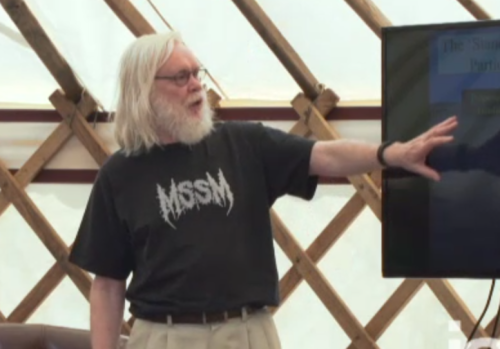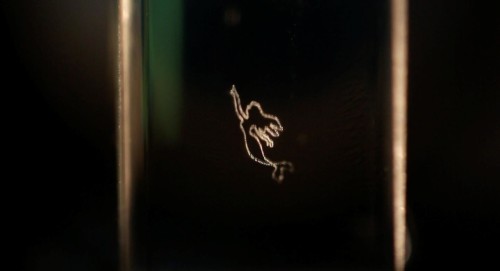Category Archives: The Red Folder
Cassini’s emotional countdown, Steve the light show, shooting hoops ‘granny style’
By Sarah Tesh
This week has seen the beginning of Cassini’s Grand Finale. The rather dramatically named final mission for the NASA spacecraft involves 22 dives between Saturn and its surrounding rings. Once complete, Cassini will crash into the planet’s atmosphere in what the scientists hope will be a flurry of data gathering. The spacecraft has already sent back stunning images of storms in Saturn’s atmosphere from its first dive on 26 April. After 20 years since its launch, the mission to Saturn’s system has been a masterclass in space exploration, and NASA highlights the best bits in this theatrical video. The short film, reminiscent of Star Trek, could be considered a bit cheesy, but it’s hard not to form an emotional attachment to NASA’s loyal Cassini as you join in the countdown to its final demise.
View all posts by this author | View this author's profile
Snooker cues, negative mass, apps for waiting and CERN croissants
By Sarah Tesh
With the World Snooker Championship taking place at the moment, it’s that time of year when those of us who are usually snookered by the game are suddenly in its pockets. Right on cue, Phil Sutton from Loughborough University in the UK helps bridge the gap between science and snooker. In his video big break, he looks at why players use chalk on their cue tips. Interestingly, there is a right way to help you spin out a 147 and a wrong way that could leave you pocketing the white.
View all posts by this author | View this author's profile
NanoCars race on gold, sketchers invade Fermilab, physics of Thor versus the Hulk
By Sarah Tesh
Science has taken motor racing to a whole new, extremely small level with the NanoCar Race. The competition on 28 April will see nanoscale molecular machines “speed” around a gold racetrack for 38 hours. As the tiny-molecule cars are not visible to the naked eye, the race will take place inside a scanning tunnelling microscope (STM) at the Center for the Development of Materials and Structural Studies (CEMES), part of the National Center for Scientific Research (CNRS) in France. The teams behind the NanoCars control their vehicles using electric pulses but are not allowed to push them mechanically. Details about the cars and their teams can be found on this website, where you will also be able to watch the race later this month. There is more about the competition in the above video.
View all posts by this author | View this author's profile
LEGO acoustics, potato cannons go to war, personal politics and popular science
By Hamish Johnston
In the above video Brian Anderson of Brigham Young University shows how the acoustic concept of “time reversal” can be used to knock over a series of LEGO figures using sound. The idea is that sound waves are broadcast into an environment and captured by a sensor at a specific location. The signal is then used to work-out how the sound waves bounced about before reaching the location and this information is then used to target that specific location with subsequent sound waves. In the demonstration, sound knocks over 29 LEGO figures one-by-one. It’s very impressive and entertaining as well.
View all posts by this author | View this author's profile
Einstein world record, Spider-Man physics, quantum films and cakes
By Sarah Tesh and James Dacey
A world-record-breaking hoard of Albert Einsteins invaded Toronto in Canada on Tuesday 28 March. 404 people gathered in the city’s MaRS Discovery District dressed in the genius’s quintessential blazer and tie, and sporting bushy white wigs and fluffy mustaches. As well as breaking the previous Guinness World Record of 99 Einsteins, the gathering kicked off this year’s Next Einstein Competition. The online contest invites the public to submit ideas that can make the world a better place and awards the winner $10,000 to help them realize it.
View all posts by this author | View this author's profile
Quantum punchlines, the cloud atlas, NASA schooled

Quantum humour: is the joke dead or alive? (Creative Commons/Benoît Leblanc)
By Sarah Tesh
You may not normally associate humour with quantum theory, but it’s not just jokes about Schrödinger’s cat and Heisenberg’s uncertainty principle that links the two. Liane Gabora of the University of British Columbia in Canada and Kirsty Kitto of Queensland University of Technology in Australia have created a new model for humour based upon the mathematical frameworks of quantum theory. The idea for their “Quantum Theory of Humour” stems from jokes like “Time flies like an arrow. Fruit flies like a banana.” Separately, the statements aren’t amusing but together they make a punchline. This requires you to hold two ideas in your head at once – a concept analogous to quantum superposition.
John Ellis on physics after the Higgs boson, calculating the loudness of the Big Bang, the chemistry of ironing

Looking ahead: John Ellis on the future of particle physics. (Courtesy: IAI TV)
By Hamish Johnston
In 2012 particle physicists gave themselves a giant pat on the back when the Higgs boson was discovered at the Large Hadron Collider at CERN – nearly 50 years after it was first predicted to exist. But what have particle physicists done since, and what does the future hold for the field? In a video called “After the Higgs boson: what’s next for 21st century physics?” from the Institute of Art and Ideas, the theoretical physicist John Ellis charts the future course of particle physics. Pay attention for a joke about the UK’s foreign secretary Boris Johnson.
View all posts by this author | View this author's profile
Hidden Figures behind NASA’s success, LEGO’s famous five women of space, seismic goal in Barcelona

Flight planner: NASA’s Katherine Johnson now has a NASA computational facility named after her. (Courtesy: NASA)
By Hamish Johnston
International Women’s Day was this week and to celebrate, we have published K Renee Horton’s review of the film Hidden Figures and the book by Margot Lee Shetterly that the film is based on. The book and film tell the true stories of African-American female mathematicians who worked at NASA and played a crucial role in America’s race into space during the Cold War. Indeed, they calculated the flight paths that would send Neil Armstrong to the Moon.
View all posts by this author | View this author's profile
Exoplanet christening, physics on the catwalk, ultrasonic wine

Quick spirit: ultrasonic waves speed up the ageing process. (CC BY-SA 3.0 Bbadgett)
By Sarah Tesh
Last week NASA announced the major find of seven Earth-like exoplanets orbiting a nearby dwarf star. The news that at least three of the seven could possibly support life was reported far and wide. Yet, as with most astronomical finds, the planets do not have the most imaginative names. Simply named after the star they orbit, they are currently called TRAPPIST-1a to TRAPPIST-1h. So NASA took to Twitter with the request #7NamesFor7NewPlanets and the public delivered. Suggestions have included the names of lost astronauts, famous composers and ancient deities. But naturally, there were also some less sensible contributions, including the seven dwarfs, many Harry Potter references, dedications to Pluto and, obviously, Planet McPlanetface 1 to 7.
View all posts by this author | View this author's profile
A laser-bubble mermaid, ode to seven exoplanets, metallic hydrogen is lost

Tiny bubbles: a laser-made mermaid. (Courtesy: Kota Kumagai/ Utsunomiya University)
By Hamish Johnston
A popular way of melding science and art is to create an image of a mythical being in your lab. Yoshio Hayasaki and colleagues at Utsunomiya University in Japan have made a pretty good likeness of a mermaid using a laser that forms tiny bubbles inside a liquid. “In our display, the microbubble voxels are three-dimensionally generated in a liquid using focused femtosecond laser pulses,” explains team member Kota Kumagai.
View all posts by this author | View this author's profile